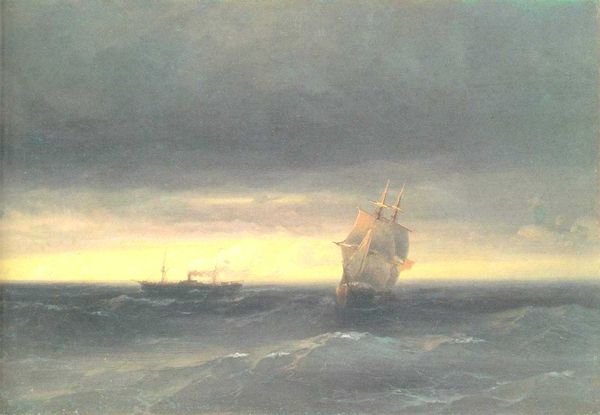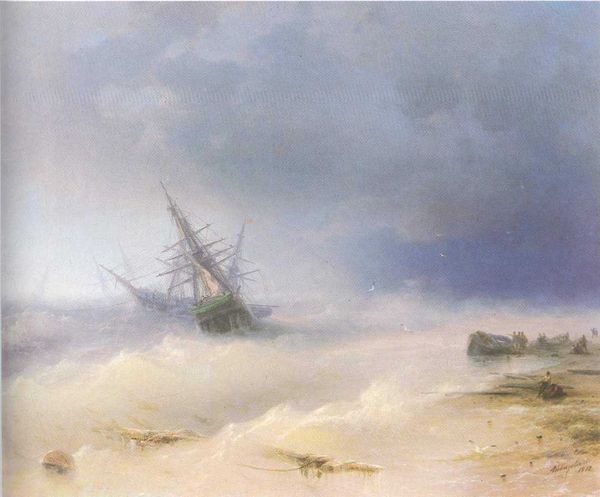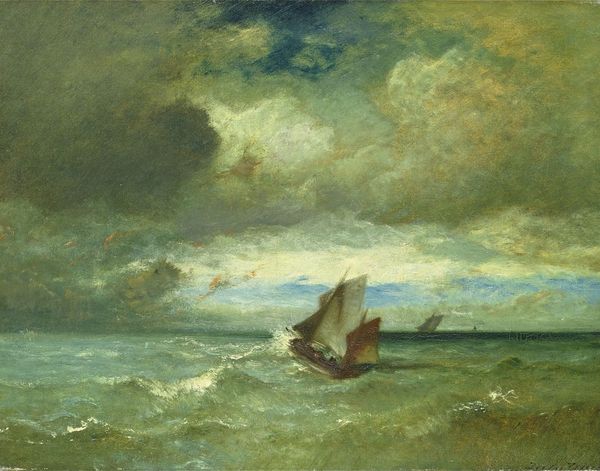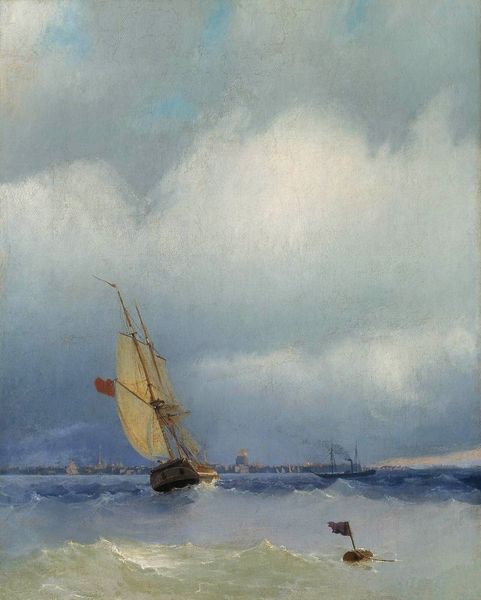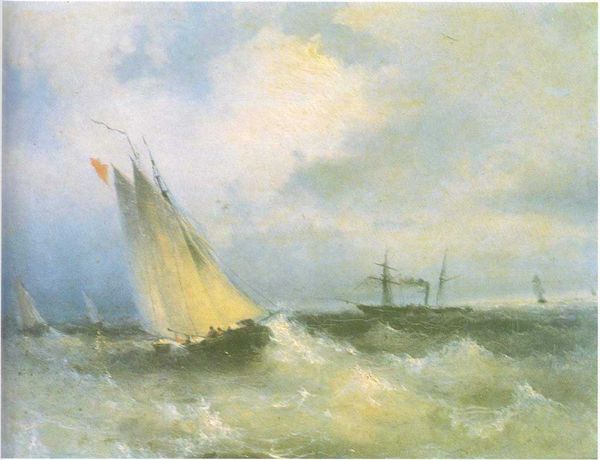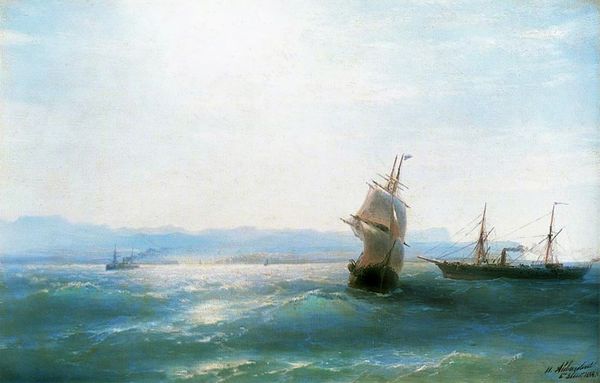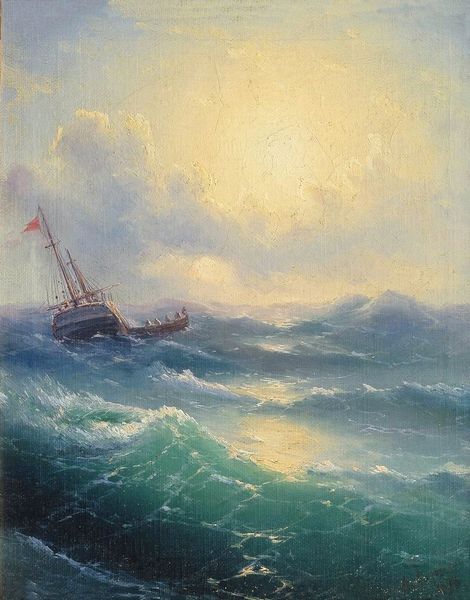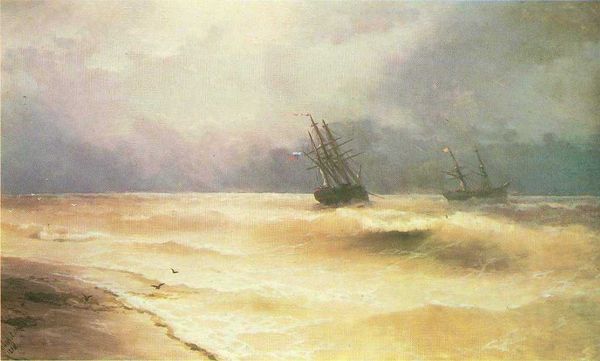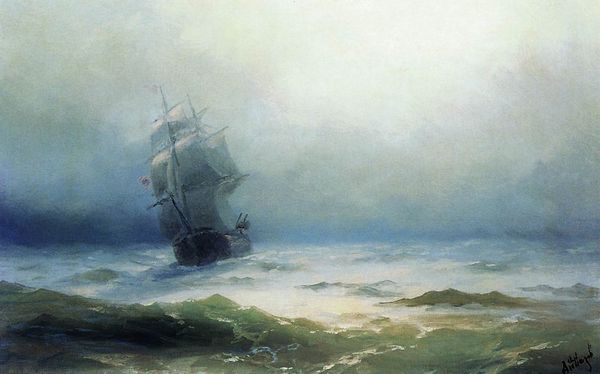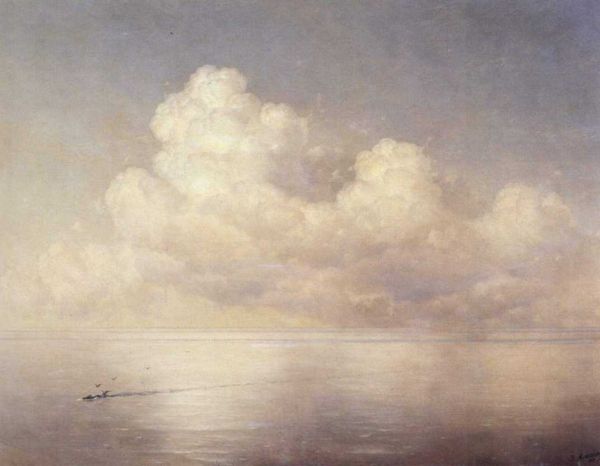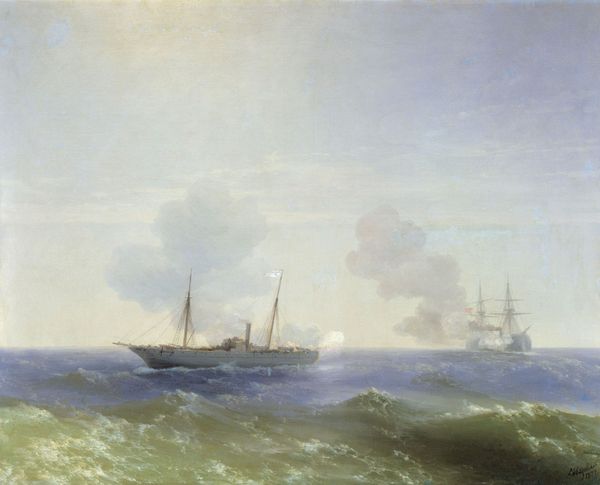
Dimensions: 54 x 72 cm
Copyright: Public domain
Curator: Aivazovsky's "The Ship Near Coast," painted around 1890. Look at those waves! It’s more than a seascape, it’s a raw expression of nature's untamed power. Editor: It feels...turbulent. The colour palette, that creamy, almost distressed application of the oil paints really stirs something unsettling in the gut, doesn't it? Curator: I think there's beauty in the anxiety he creates. His mastery is in capturing light; that glow that seems to emanate from the canvas itself. Editor: Agreed. But thinking about it more deeply, that kind of romantic depiction does a lot of work to hide the actual work involved in ship making. What timber went into its construction, what sort of nails or binding? Curator: Perhaps. It could be seen as glossing over the materiality, but I like to think Aivazovsky aims to stir something deeper. He gives us the ocean as a being. Something alive, awe-inspiring and terrifying. The ship looks so fragile and at the mercy of the forces in the foreground. Editor: Exactly! He’s heightened that relationship to something spiritual by muting the tangible properties that would allow such a machine to work. You can hardly separate sky from water, so how could one separate a boat, then, from the means of making it? Curator: So the ship itself as a symbol is lost in his treatment of the seascape? Or enhanced? I can't decide. Editor: It's interesting how you zero in on that anxiety though; painting something this volatile also involved navigating the very messy process of acquisition. Maybe by washing over these properties he’s commenting on the way resources get erased and become art... Curator: Hmmm... I might never look at an Aivazovsky seascape the same way again. Editor: Ha! Well, looking closer definitely opens things up, doesn’t it? Next time I’m near water, though, I think I'll reflect more on what the materials are that makes it flow.
Comments
No comments
Be the first to comment and join the conversation on the ultimate creative platform.
